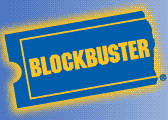 |  |  |
24/7 Wall Street, via The Huffington Post has written a list of 10 brands that will disappear by next year. Given that is only 6 months away, we thought we would give some of those companies some advice as to how they can turn their company around, if they dare.
Readers Digest
Citing some dismal figures, HuffPo states that, as is the trend with other newsosaurs, the end is probably nigh. Reader’s Digest may have been at one time the most widely read magazine in the world, or at least in doctors surgeries. It emerged from bankruptcy in February with $525 million in exit financing, and Readers Digest cut the number of issues it publishes a year from twelve to ten. It also cut its circulation guarantee for advertisers to 5.5 million copies from 8 million.
It looks like it could be death by a thousand cuts for the iconic brand. However largly this commentary does not take into account the Readers Digest online brands. Alexa places rd.com almost in the top 1000 websites in the US, and certainly one of the most dominant for females over 45. Also Readers Digest has one of the widest and largest distribution chains of any publishing house in the world. All is not lost, and Readers Digest is definitely not on the way out. So here are 5 quick things Readers digest could do to recover some value for their brand.
- Open up the website to readers. Readersdigest.com offers no way to interact with other readers or with the magazine. No comments, no forum, nothing. How can they claim to want to engage readers when there is no way readers can interact with the magazine.
- Online first, then offline. The content online is virtually identical to the offline content. So why not publish on the web first, and then offline. If they created content online, then could open it up to discussion, allow the most interesting content to float to the surface, and then publish that. This would mean the offline content has the most interesting articles, with feedback from readers, with links to more content online.
- Exploit local advertising. All the ads online are served by Sensis and Google. or, apparently, they can serve their own ads. All of this is actually really hard to tell because the advertising section of the website is woeful. It seems, local advertising in the printed form is managed by the local marketing group. Why seperate them? Why not allow local businesses, or at least region specific ones, to advertise online and offline? Advertising integrated to content could be the same on the website as in the magazine.
- Increase circulation. When a magazine or paper cuts circulation, that is the beginning of the end. It would be better to give away the magazine than to sell less. There are plenty of places that Readers Digest could expand both content and distribution into, including vending machines. Imagine buying a lemonade for $2 and then grabbing the Readers Digest for $4. What about allowing more guest writers etc.
- Be a content brand first. The website is co branded with a few other websites too, and rdadvertising.com.au also points to The Discovery Channel website. But what about expanding content from the magazine onto other media? Each month they could have a hot content section on the local breakfast show etc.
Blockbuster, Inc.
Was the national leader in the video rental business for nearly two decades. However, as ever, all the directors had to do was take a great company and do nothing. Now it faces competition from Redbox and NetFlix. Blockbuster has more than 6,000 stores, again distribution is a strength, so it is hard to imagine that the company could disappear. However if online movie distribution does one tenth of what it is supposed to, then the physical stores will be dead. In order to save themselves, here are 5 quick things they can do;
- Shake up their board. At least one activist investor is trying to change the way Blockbuster operate. The CEO already covets Netflix. What the hell is their problem? If I was a shareholder I would be so pissed off at the current board that they have done nothing give direction to Blockbuster.
- Start offering downloads, open up OnDemand. Blockbuster already have digital movie rentals on demand, but it appears it is only through TiVo. In Australia iTunes is the only place where you can get movies to download legally. Netflix is the dominant competitor in streaming movies. Why not offer a place where people can download movies legally?
- Have another look at your core. Blockbuster claim that their core is “family-oriented mom who is not as willing to figure out how to go to a console or a computer and load a movie into the queue.” That dated statement is a perfect example of why Blockbuster are struggling. Even Readers Digest can see there is a market online for over 45 females. My nan watches TV on the internet now. The techno-illiterate are a diminishing group of people. Maybe their core should be “family-oriented parent who is too busy to go to the store,” or even better “Busy entertainment seekers”.
- Start using social media. How hard is it to get these companies to start a discussion? Movie fans are fairly die hard. Why not allow movie viewers to start discussing and recommending movies online. Why not give users the tools to start fan clubs, movie clubs etc through their website?
- Integrate online and offline data. The Netflix prize was all about publicity and recommendations. Why not allow other users/members to do the same. Why not have digital displays in stores for the top titles showing what other members have recommended?
BP
We blogged about how the oil leak would not damage BP’s Brand. That was before the estimates of leakage moved up to 100000 barrels per day and they had spent $2 billion on the clean up. The situation for BP has gone from dire to catastrophic, however even 247wallstreet.com admits that it will not end the company. More that BP will be broken into smaller pieces. We actually believe a break up would be a good thing for the company, because it would allow profitable pieces to prosper on their own. However, if BP wanted to avoid a break up, here are 4 quick suggestions for how they could do it.
- Open Source/Crowd Source the clean up. This includes getting Kevin Costner involved which apparently they have already done. The problem with the clean up initially was they kept all the information too close to themselves, and they distanced themselves from taking active action. It has taken them nearly four months to get to this stage, and we are still no closer to fixing the hole in the pipe. Crowd Sourcing solutions and execution teams would not only have given them an answer faster, it would have certainly given them Kevin Costner sooner too.
- Fix the Gulf of Mexico Fast. The faster the oil is cleaned up, the less it will cost and the better BP will look. If they wait and wait, and deny like Exxon did, it will cost them more in the long run.
- Get back to being environmentally friendly/diversify. Their new CEO has admitted that BP was in the business of oil. Almost 10 years of work building a multiple energy source company was let go to waste when he became CEO. They were once the leading manufacturers of solar panels in the world, and still are one of the top. It should be time to maximise that.
- Sell off retail. Retail sales make up a very small percentage of revenue. It probably gives BP a good steady flow of cash into the company. However it is not their core business. They have already branded some of their stores AMPM and other brands. Now would be the best time to offload it.
What do you think? How else can these companies save themselves?





